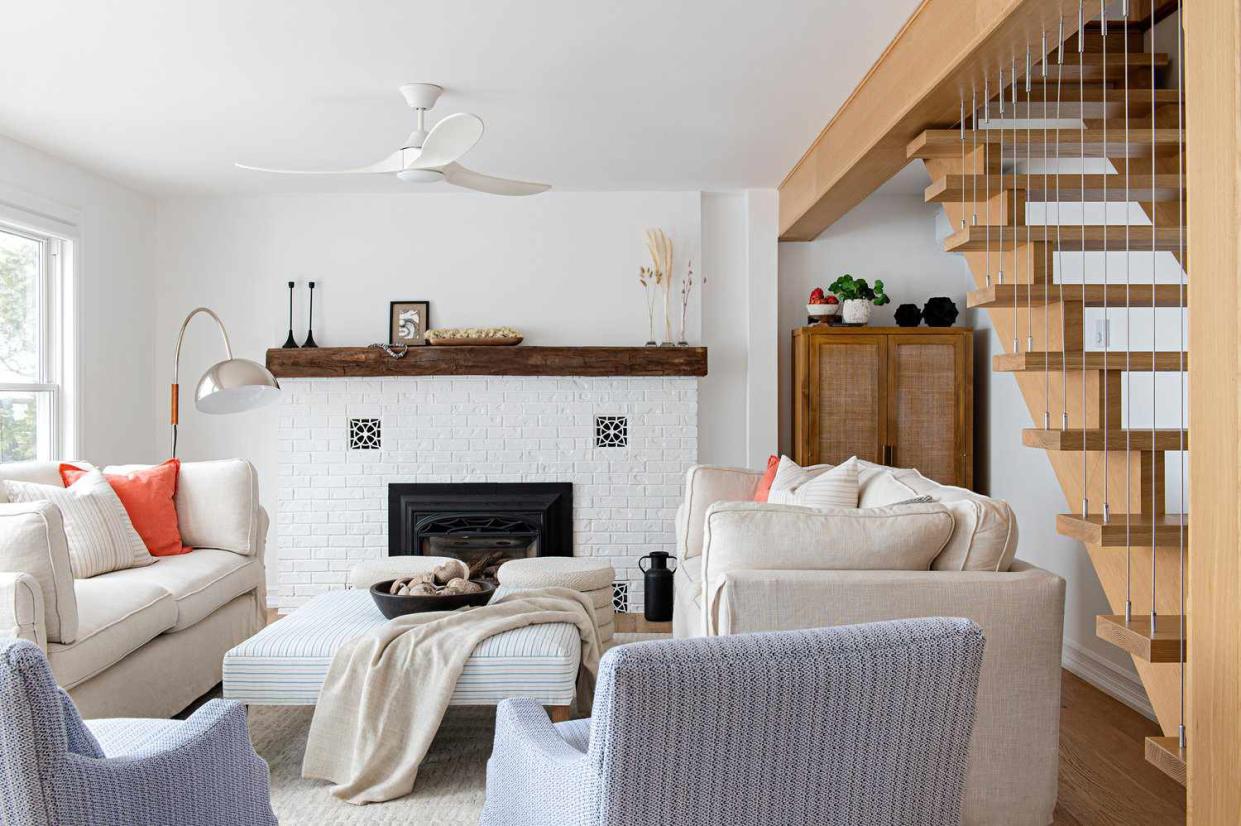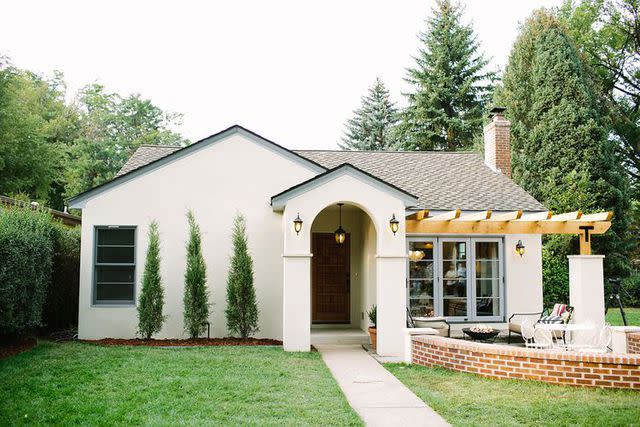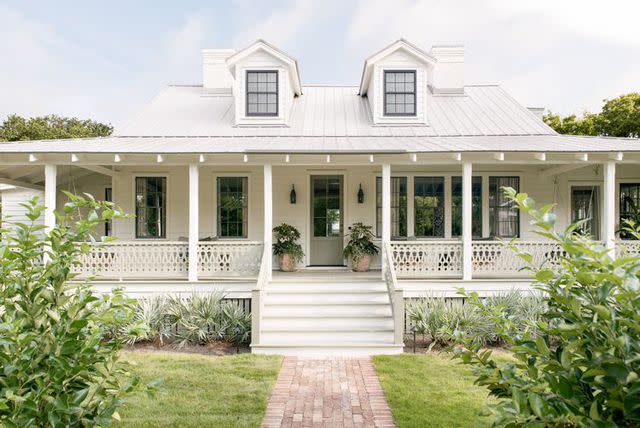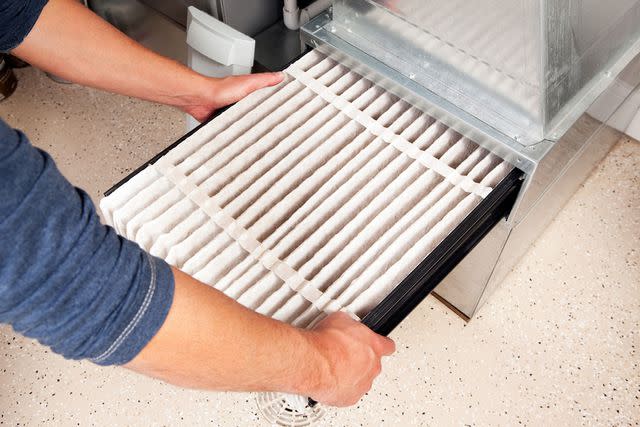6 Home Issues You Can Fix Without a Professional, We Promise

Close all of your open tabs and stop your search for a plumber. Even if you're a beginner DIYer, you can likely handle many basic home issues yourself, no handyperson necessary.
Just ask DIY expert Elisha Kelly, who is always encouraging her followers that DIY projects may seem intimidating, but all it takes is a bit of knowledge and some determination. We tapped her and a few additional home project experts about which tasks you can safely tackle yourself without calling a professional.
Ready to tackle some beginner house projects? Here are the ones experts recommend starting with.
Meet the Experts
Elisha Kelly is a DIY expert and the creative mind behind Our Aesthetic Abode, where she shares encouragement and step-by-step DIYs.
Julian Thomas is the DIYer behind Told by Thomas, where he shares DIY projects and home lifestyle tips.
Brad Rempel and Jennifer Wayne are the hosts of The Design Network's "Flip U" and instructors of American Standard Heating and Air Conditioning’s Homeowning 01 program.
How to Be Prepared for Tackling Home Projects
“So often, I hear people say, ‘I’d love to do DIY projects, but I don’t even know where to start,’” Kelly says. Her best trick? Starting small and consulting YouTube.
That’s where DIYer Julian Thomas, who jokes that he’s a graduate of YouTube University, turns. Instead of outsourcing simple home projects, he’ll find a relevant YouTube tutorial to walk him through the work.
Thomas also recommends tapping into home improvement brands’ education hubs, which offer vast amounts of how-to resources for DIY projects. Command has one, and so does Lowe’s.
Draft-Proofing Your Home

Design by JAM Interior Design / Photo by Dustin Halleck
When colder weather is on the way, draft-proofing your home becomes a must.
House flippers Brad Rempel and Jennifer Wayne say this is a simple DIY task you can add to your to-do list. After all, you (and your energy bill) want to keep the warm air in and the cold air out.
Start by filling gaps around your doors and window frames with caulk, Rempel says. Wayne adds that another great way to block drafts is to add a fabric draft excluder at the front of your doors. Insulating your floor with area rugs can help prevent heat loss too.
“Not only will this make your home feel warm and cozy, but you'll also use less energy to heat it,” Rempel says. “A more efficient home is better for the planet, and it may save you on your energy bill.”
For more detailed step-by-step instructions, watch Rempel and Wayne’s video on how to draft-proof your home.
Installing Hardwired Lighting

Design by Cortney Bishop Design / Photo by Katie Charlotte Photography
Before you book an electrician, consider installing new light fixtures on your own, or with a bit of help, of course.
“It might sound—and look—intimidating, but installing hardwired lighting is an easy DIY project that can quickly upgrade any room,” Thomas says.
Other than a screwdriver, most new lighting fixtures come with all the necessary tools to properly install the light fixture yourself in about an hour. If you’re wary about hardwiring, there are also plenty of options for plug-in, mounted lighting.
Warning
Make sure you turn off the electricity in the room you are working in, always use a sturdy ladder, and if possible, install hardwired lighting with the help of another set of hands.
Replacing Door Locks

Design by Forge & Bow / Photo by Christa Tippmann Photography
Forget the old lock and key. Installing programmable keypads on your exterior doors makes for a convenient, safe, and easy home project—especially if you have people coming in and out of your house often.
“There’s truly nothing more frustrating than fumbling around with your keys, especially when it’s cold outside,” Wayne says.
Don’t be intimidated by the installation process. It’s just two steps and only requires a screwdriver. Simply remove your door handles, then reinstall the new keypad entry.
Once installed, you can create special codes for guests, house cleaners, or dog walkers, creating an extra safe security system.
Adding Trim or Wainscoting

Another house project that you should feel confident handling yourself? Adding trim, millwork, wainscoting, or an accent wall.
It’s a small DIY that makes a big difference. With the help of a quick YouTube tutorial, a nail gun, and a trip to the home improvement store, you can make over a room without calling a professional.
“Adding wall trim or an accent wall can transform a boring room into looking trendier and more inviting,” Rempel says.
Clearing Your Gutters

When it comes to basic leaf maintenance, there’s no need to call in a gardener—no matter how terrible your thumb is. Once the temperatures drop and the majority of the leaves have cleared off the trees, it’s time to keep an eye on your gutters.
Leaves in gutters can cause clogs and potential water damage to your walls and ceilings, as well as insect infestations and damp basements.
Rempel says it’s important to be consistent about clearing out your gutters and recommends doing a proper sweep at least once a week. If heavy rain or snowfall is in the forecast, it is always best to rid your lawn of leaves and debris before the storm arrives.
Wayne has a warning though: “Remember to wear protective clothing,” she says. Gardening gloves, a long-sleeve shirt, and comfortable boots can provide support and even prevent injuries.
Furnace or Heat Pump Maintenance

BanksPhotos / Getty Images
One of the most crucial steps in home maintenance, Rempel says, is to check your furnace or heat pump to ensure your system is in optimal condition.
However, before contacting your local HVAC dealer for a seasonal maintenance check, there are a few easy tasks you can do on your own to ensure your unit is running properly.
First, clean or replace filters every 30 to 90 days to help avoid any unexpected breakdowns. This also helps with your system’s efficiency, saving you on your energy usage and your monthly bill.
Wayne also recommends signing up for an air filter subscription service (say, on Amazon) so replacement filters are sent straight to your doorstep, no reminder needed.
Read Next: 15 Small-Scale Renos to Refresh Your Home in a Weekend
Read the original article on The Spruce.

